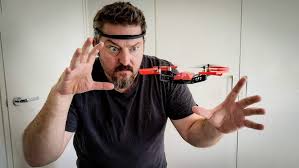
Breaking News
 Alaska Plots AI-Driven Digital Identity, Payments, and Biometric Data System
Alaska Plots AI-Driven Digital Identity, Payments, and Biometric Data System
 Another TRILLION Dollar NDAA Military Spending Bill!
Another TRILLION Dollar NDAA Military Spending Bill!
 The #1 Worst Protein in the World!
The #1 Worst Protein in the World!
 Battleborn 12V Battery: Major Safety Issue
Battleborn 12V Battery: Major Safety Issue
Top Tech News
 Build a Greenhouse HEATER that Lasts 10-15 DAYS!
Build a Greenhouse HEATER that Lasts 10-15 DAYS!
 Look at the genius idea he came up with using this tank that nobody wanted
Look at the genius idea he came up with using this tank that nobody wanted
 Latest Comet 3I Atlas Anomolies Like the Impossible 600,000 Mile Long Sunward Tail
Latest Comet 3I Atlas Anomolies Like the Impossible 600,000 Mile Long Sunward Tail
 Tesla Just Opened Its Biggest Supercharger Station Ever--And It's Powered By Solar And Batteries
Tesla Just Opened Its Biggest Supercharger Station Ever--And It's Powered By Solar And Batteries
 Your body already knows how to regrow limbs. We just haven't figured out how to turn it on yet.
Your body already knows how to regrow limbs. We just haven't figured out how to turn it on yet.
 We've wiretapped the gut-brain hotline to decode signals driving disease
We've wiretapped the gut-brain hotline to decode signals driving disease
 3D-printable concrete alternative hardens in three days, not four weeks
3D-printable concrete alternative hardens in three days, not four weeks
 Could satellite-beaming planes and airships make SpaceX's Starlink obsolete?
Could satellite-beaming planes and airships make SpaceX's Starlink obsolete?
Review: Hands-free flight with EEGSmart's mind-controlled UDrone

That's the question EEGSmart poses with its UDrone mini-quad, which responds to brainwaves and head movements instead of thumbsticks. It's not perfect, but it does give a glimpse of a mind-controlled future.
The Udrone itself is fairly unremarkable; it's a lightweight mini-quadcopter with 2-inch props, nice plastic bumpers to save it from damage when it bumps into a wall, and an 8-megapixel, 1080p-capable camera. You can fly it using your mobile phone, in which case it works like most similar small quads, but also has some smarts under its belt with face tracking, subject tracking and gesture recognition.
It flies for six or seven minutes on a battery, which is about right for this size of thing. The camera isn't anything to write home about, but it streams video back to your phone in real time as long as you're within Wi-Fi range. So far, so ordinary.

 First totally synthetic human brain model has been realized
First totally synthetic human brain model has been realized Mach-23 potato gun to shoot satellites into space
Mach-23 potato gun to shoot satellites into space

